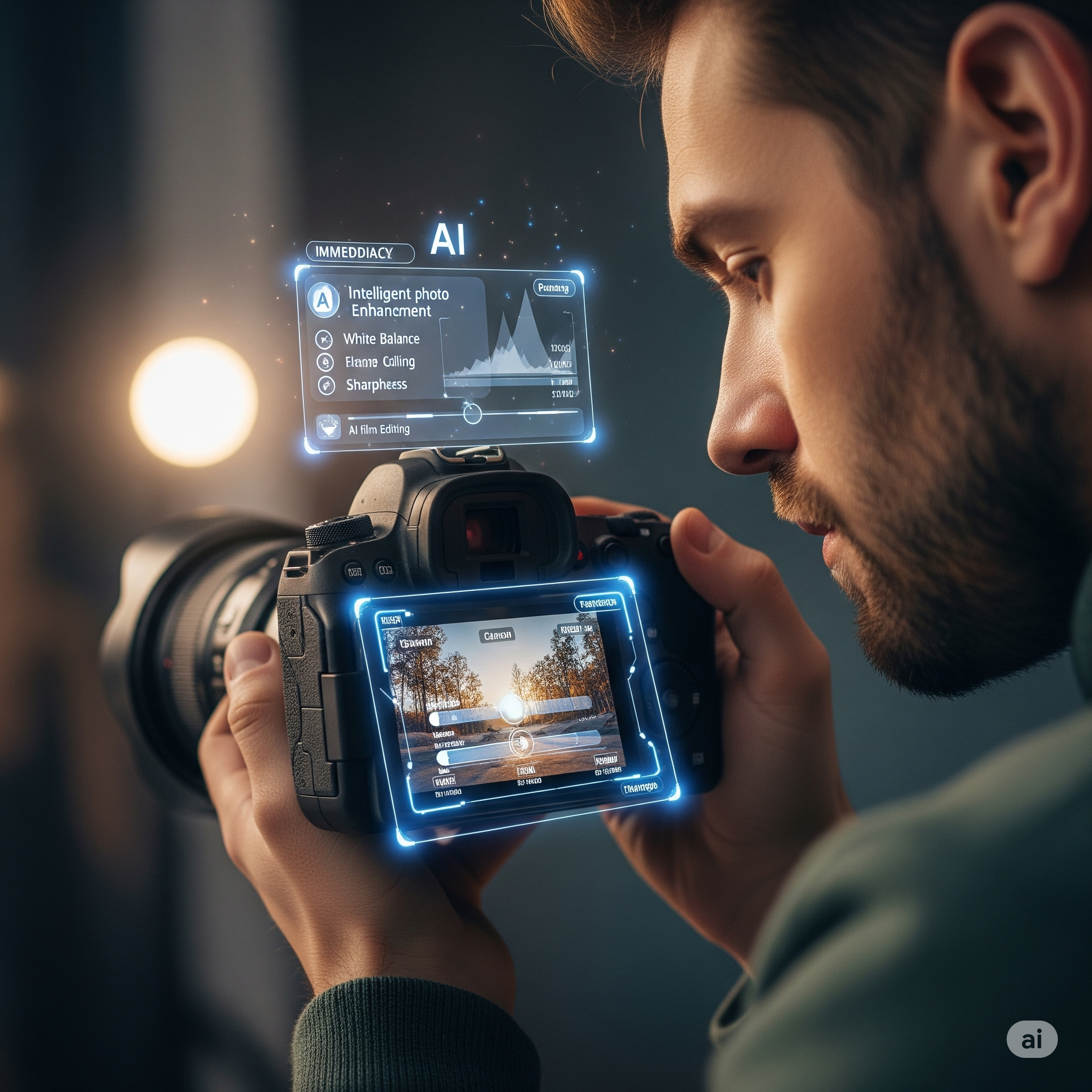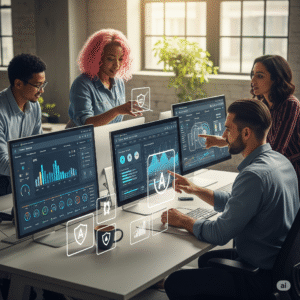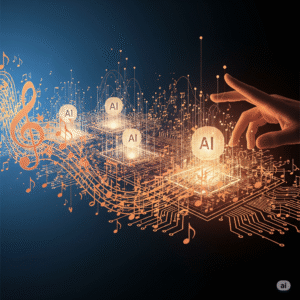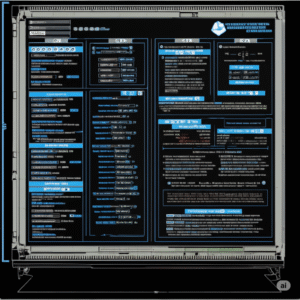The world of photography is undergoing a seismic shift, powered by the rapid advancements in Artificial Intelligence. Gone are the days when photographers spent countless hours on manual adjustments, painstaking retouches, and repetitive tasks. Today, AI photography tools are not just a futuristic concept; they are a tangible reality, revolutionizing how we capture, process, and present visual stories. From amateur enthusiasts to seasoned professionals, everyone can now leverage the power of image editing AI to enhance their creative output and streamline their workflow like never before.
This long-form guide will delve into the transformative impact of AI on photography, exploring how these intelligent tools are enhancing images, optimizing workflows, and opening up entirely new creative avenues. We’ll also examine the burgeoning field of AI film editing, showcasing how similar AI principles are reshaping video production.
The Dawn of Intelligent Imaging: What are AI Photography Tools?
At its core, AI photography tools are software applications and algorithms that leverage artificial intelligence and machine learning to automate, assist, and augment various aspects of the photographic process. Unlike traditional editing software that relies heavily on manual input, AI tools can analyze visual data, understand context, and apply intelligent adjustments with remarkable precision. This ranges from simple enhancements like color correction and noise reduction to complex tasks such as background removal, object manipulation, and even generating entirely new visual elements.
The beauty of image editing AI lies in its ability to learn and adapt. Many AI models are trained on vast datasets of images, allowing them to recognize patterns, identify common photographic challenges, and suggest optimal solutions. This intelligent automation frees up photographers from tedious, time-consuming tasks, allowing them to focus more on their creative vision and less on the technical minutia.
Revolutionizing Image Enhancement with AI
The most immediate and apparent impact of AI photography tools is on image enhancement. What once required intricate knowledge of curves, layers, and masks can now be achieved with a few clicks or even automatically.
Intelligent Retouching and Restoration
One of the most impressive applications of image editing AI is in portrait retouching. Tools can automatically smooth skin, whiten teeth, remove blemishes, and even adjust facial features subtly, all while maintaining a natural look. For instance, AI-powered skin softening can eliminate imperfections without making the subject appear plastic or artificial. Similarly, old photo restoration has been revolutionized, with AI capable of repairing scratches, tears, and discoloration, breathing new life into cherished memories.
Noise Reduction and Sharpening
Low-light photography often results in grainy, noisy images. Traditional noise reduction methods can often soften details. However, advanced AI photography tools utilize deep learning to intelligently distinguish between noise and actual image detail, dramatically reducing noise while preserving sharpness and clarity. Similarly, AI-powered sharpening algorithms can enhance details without introducing undesirable artifacts or halos, ensuring crisp and vibrant images.
Smart Color Grading and Exposure Correction
Achieving consistent and appealing color and exposure across a series of photos can be a significant challenge. AI tools can analyze an image’s lighting and color balance, then suggest and apply corrections to achieve a professional look. This is especially useful for event photographers dealing with varying light conditions. Imagine processing hundreds of wedding photos, and an image editing AI tool automatically corrects white balance and exposure for each, ensuring a cohesive look throughout the album.
Background Manipulation and Object Removal
The ability to seamlessly remove or replace backgrounds has become a game-changer for product photography and composite imagery. AI photography tools can accurately detect subjects and separate them from their backgrounds with incredible precision, even with complex edges like hair. Furthermore, unwanted objects or distractions can be effortlessly removed from a scene, leaving behind a clean and natural-looking image. This saves hours of meticulous selection and cloning in traditional editing software.
Streamlining the Workflow: Beyond Just Editing
The influence of AI extends far beyond individual image adjustments. It’s fundamentally transforming the entire photographic workflow, from culling to final delivery.
Automated Culling and Selection
For photographers who shoot hundreds or thousands of images at an event or photoshoot, culling the best shots is a monumental task. AI photography tools like Aftershoot utilize AI to analyze images for sharpness, focus, composition, and even closed eyes, helping photographers quickly identify and select their keepers. This drastically reduces the time spent on the initial sorting phase, allowing professionals to get to the creative editing much faster.
Intelligent Organization and Tagging
Managing vast photo libraries can be overwhelming. AI-powered photo management systems can automatically tag images based on their content, identifying objects, locations, and even people through facial recognition. This makes searching for specific images incredibly efficient. Imagine being able to type “beach sunset” or “family portrait” into your photo library and instantly find relevant images, thanks to the underlying image editing AI intelligence.
AI for Creative Inspiration and Generation
Beyond enhancing existing images, generative AI is opening up new possibilities for creative expression. AI art generators can create unique visual concepts from text prompts, allowing photographers to visualize and experiment with ideas before even picking up their camera. While not replacing original photography, these tools can serve as powerful brainstorming aids or even generate unique elements to be composited into existing photos. The line between what’s captured and what’s created continues to blur in fascinating ways.
Case Studies: AI in Action
To truly understand the impact of AI photography tools, let’s look at how real professionals and businesses are leveraging them.
Case Study 1: The Wedding Photographer’s Efficiency Boost
Sarah, a wedding photographer based in Jaipur, India, used to dread the post-production phase of her work. After a typical wedding, she’d return with 3000-5000 raw images. Culling and basic color correction alone would take her days, sometimes even a full week. “It was exhausting,” she recalls. “I loved shooting, but the editing backlog was immense.”
Sarah started using an AI photography tool for culling and initial color adjustments. The AI quickly identifies blurry shots, duplicates, and images where people have closed eyes, reducing her initial selection from thousands to a few hundred keepers in a fraction of the time. The same tool then applies her personalized color profiles with remarkable consistency across the entire batch. “What used to take me five days, I can now do in a day and a half,” Sarah explains. “It’s not about replacing my artistic touch, but rather freeing me up to focus on the truly creative edits and spend more time connecting with my clients.” This significant reduction in post-production time has allowed Sarah to take on more bookings and maintain a healthier work-life balance, directly impacting her business’s profitability.
Case Study 2: E-commerce Product Photography Scaled
A rapidly growing online clothing brand, “StyloFab,” struggled with the sheer volume of product photography needed for their extensive catalog. Each garment required consistent lighting, background removal, and often a lifestyle shot. Hiring a large team of retouchers was expensive and time-consuming.
StyloFab integrated an image editing AI solution into their workflow. Now, photographers capture the products against a simple backdrop. The AI automatically removes the background, precisely crops the product, and even applies consistent lighting adjustments. For lifestyle shots, they use generative AI to create realistic scenes where models can be digitally placed, eliminating the need for expensive photoshoots with various locations and props. “Our production cycle for new collections has been cut by 60%,” says Rahul, StyloFab’s Head of Marketing. “The consistency in our product images across the website has improved dramatically, and our conversion rates are up. This allowed us to scale our product offerings much faster and more cost-effectively.” This demonstrates how AI helps businesses turn data (in this case, raw image data) into actionable, profit-driving decisions.
Exploring AI Film Editing: Beyond Still Images
The revolution isn’t limited to still photography. AI film editing is rapidly transforming the video production landscape, from pre-production planning to post-production refinement.
Automated Footage Analysis and Selection
Just like with still images, AI can analyze video footage to identify key moments, detect scenes, and even recognize emotions. This is invaluable for editors sifting through hours of raw footage from interviews, events, or documentaries. AI can automatically generate rough cuts by selecting the most engaging clips, saving editors countless hours.
Smart Color Grading and Audio Enhancement
AI film editing tools can apply consistent color grades across an entire video, even when lighting conditions change. Similarly, AI can intelligently clean up audio, removing background noise, echoes, and even enhancing dialogue clarity, leading to a much more professional final product.
Generative AI for Visual Effects and Transitions
The realm of visual effects is also being touched by AI. Generative AI can assist in creating complex visual effects, generating realistic backgrounds, or even designing dynamic transitions between scenes. While human creativity remains paramount, AI acts as a powerful co-pilot, accelerating the creation of stunning visual narratives.
Beginner-Friendly Tips for Implementing AI in Your Workflow
Ready to dive into the world of AI photography tools and AI film editing? Here are some beginner-friendly tips:
- Start Small, Experiment Often: Don’t try to overhaul your entire workflow at once. Pick one or two AI tools that address a specific pain point (e.g., culling, noise reduction) and experiment with them.
- Understand the “Why”: Before using an AI tool, consider why you’re using it. Is it to save time? Improve quality? Unlock new creative possibilities? Knowing your objective will help you evaluate the tool’s effectiveness.
- Embrace the Learning Curve: While AI aims for simplicity, there’s always a learning curve with new software. Watch tutorials, read guides, and don’t be afraid to try different settings.
- Maintain Human Oversight: AI is a powerful assistant, not a replacement for human judgment. Always review AI-generated results and make manual adjustments as needed to ensure they align with your artistic vision.
- Focus on Collaboration: Think of AI as a collaborator. It handles the mundane, repetitive tasks, freeing you to concentrate on the creative decisions that truly define your work.
- Backup Your Work: As with any digital workflow, always back up your original files before applying significant AI transformations.
Recommended AI Tools for Photographers and Videographers
Here are some prominent AI photography tools and AI film editing solutions, with brief descriptions and direct links:
- Adobe Photoshop (with Generative Fill/Expand): An industry standard with powerful image editing AI features like Generative Fill for adding or removing content seamlessly and Generative Expand for extending canvases.
- Luminar Neo: A dedicated AI-powered photo editor offering features like Sky AI, Structure AI, Relight AI, and Portrait AI for quick and impactful edits.
- Topaz Labs Suite (DeNoise AI, Sharpen AI, Gigapixel AI): Specializes in AI-powered noise reduction, sharpening, and upscaling, delivering exceptional image quality even from challenging sources.
- Aftershoot: An AI-powered culling and editing assistant specifically designed for photographers to quickly select and edit images.
- DaVinci Resolve (with AI features): A comprehensive video editing, color correction, visual effects, and audio post-production software with integrated AI tools for tasks like smart reframe and object detection.
- Gling: An AI video editing software that helps YouTubers and content creators quickly remove bad takes, silences, and filler words, and generate captions automatically.
The Future of Photography is Intelligent
The integration of AI into photography and film editing is not a passing trend; it’s a fundamental evolution. AI photography tools and AI film editing capabilities are continually advancing, promising even more sophisticated and intuitive solutions in the years to come. While concerns about AI replacing human creativity sometimes arise, the reality is that AI serves as an immensely powerful assistant, augmenting human skills and enabling photographers and videographers to push creative boundaries further than ever before.
By embracing these intelligent tools, professionals can optimize their workflows, enhance their visual output, and ultimately, dedicate more time to the passion that drives them: capturing and creating compelling stories through the lens. The future of photography is not just about what we capture, but how intelligently we craft it.
Links: The Future of AI Video Production: Streamlining Editing and Special Effects
The Future of AI Music Composition: Unlocking Limitless Creativity in Sound



